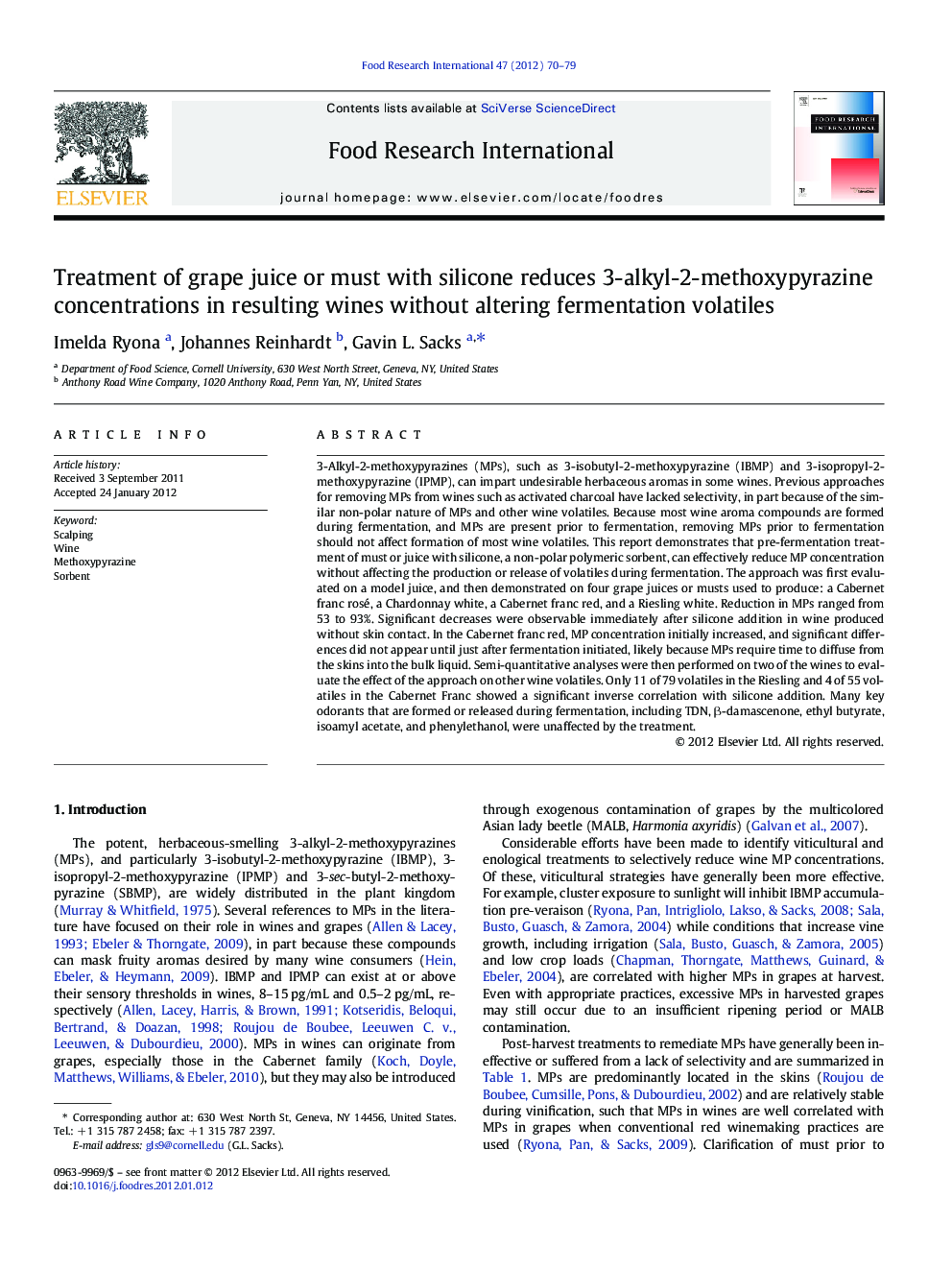| Article ID | Journal | Published Year | Pages | File Type |
|---|---|---|---|---|
| 4561944 | Food Research International | 2012 | 10 Pages |
3-Alkyl-2-methoxypyrazines (MPs), such as 3-isobutyl-2-methoxypyrazine (IBMP) and 3-isopropyl-2-methoxypyrazine (IPMP), can impart undesirable herbaceous aromas in some wines. Previous approaches for removing MPs from wines such as activated charcoal have lacked selectivity, in part because of the similar non-polar nature of MPs and other wine volatiles. Because most wine aroma compounds are formed during fermentation, and MPs are present prior to fermentation, removing MPs prior to fermentation should not affect formation of most wine volatiles. This report demonstrates that pre-fermentation treatment of must or juice with silicone, a non-polar polymeric sorbent, can effectively reduce MP concentration without affecting the production or release of volatiles during fermentation. The approach was first evaluated on a model juice, and then demonstrated on four grape juices or musts used to produce: a Cabernet franc rosé, a Chardonnay white, a Cabernet franc red, and a Riesling white. Reduction in MPs ranged from 53 to 93%. Significant decreases were observable immediately after silicone addition in wine produced without skin contact. In the Cabernet franc red, MP concentration initially increased, and significant differences did not appear until just after fermentation initiated, likely because MPs require time to diffuse from the skins into the bulk liquid. Semi-quantitative analyses were then performed on two of the wines to evaluate the effect of the approach on other wine volatiles. Only 11 of 79 volatiles in the Riesling and 4 of 55 volatiles in the Cabernet Franc showed a significant inverse correlation with silicone addition. Many key odorants that are formed or released during fermentation, including TDN, β-damascenone, ethyl butyrate, isoamyl acetate, and phenylethanol, were unaffected by the treatment.
► Pre-fermentation silicone treatment in juice or must reduces MP levels in wine. ► Most fermentation-derived volatiles were not affected by the treatment. ► Treatment was demonstrated to be effective for both red and white wines. ► Sensorial evaluation showed the effectiveness of treatment in reducing green aroma.
